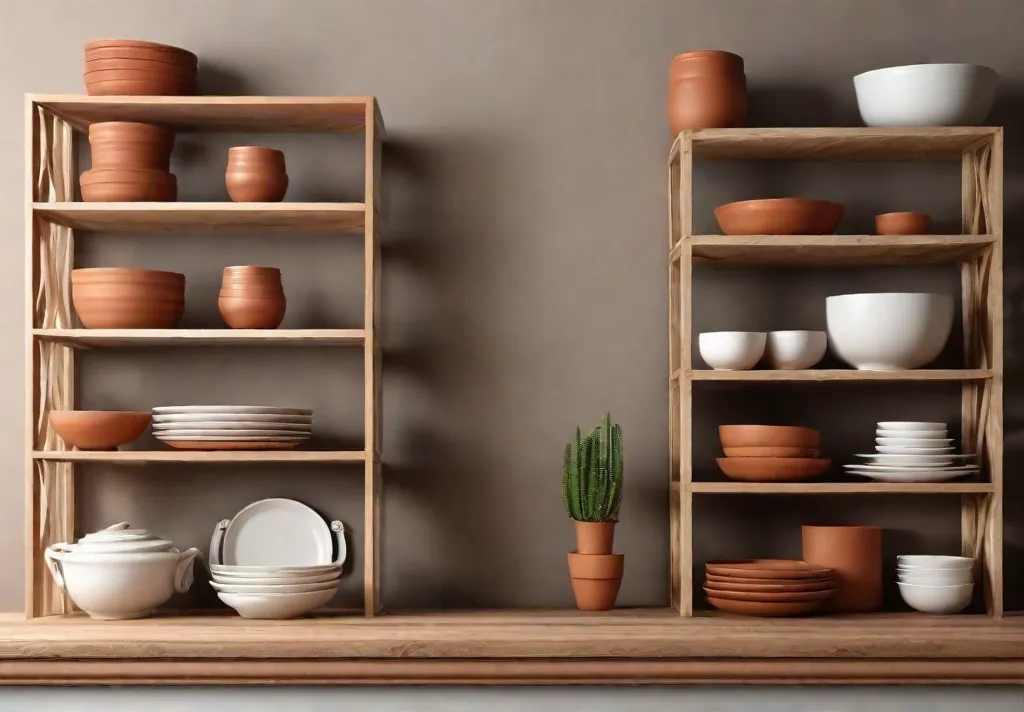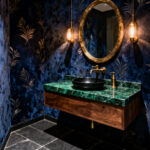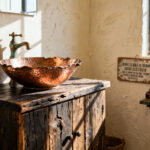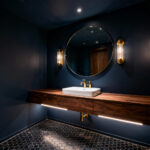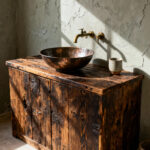The kitchen is more than just a room for cooking; it’s the heart of the home. It’s where families gather to share meals, laughter, and stories. It’s where memories are made. A well-decorated kitchen can make all the difference in the overall feel of your home. It can make your home feel more inviting, cozy, and personal. It can also increase your home’s value.
You don’t need to spend a lot of money to transform your kitchen. With a few simple decor ideas, you can give your kitchen a whole new look. This listicle provides 10 kitchen decor ideas that will help you take your kitchen from drab to fab.
Incorporate Open Shelving
In recent years, open shelving has gained immense popularity in kitchen design. By eliminating cabinet doors and drawers, open shelving creates a sense of spaciousness and lightness, making smaller kitchens appear more prominent. It also allows for easy access to frequently used items and adds a touch of personality to the space.
Open shelving can be crafted from various materials, including wood, metal, glass, and even concrete. Wooden shelves exude warmth and natural beauty, while metal shelves add a modern and industrial touch. Glass shelves provide a clean and airy look, allowing maximum visibility of displayed items. Concrete shelves offer a unique and edgy aesthetic, adding a touch of urban sophistication.
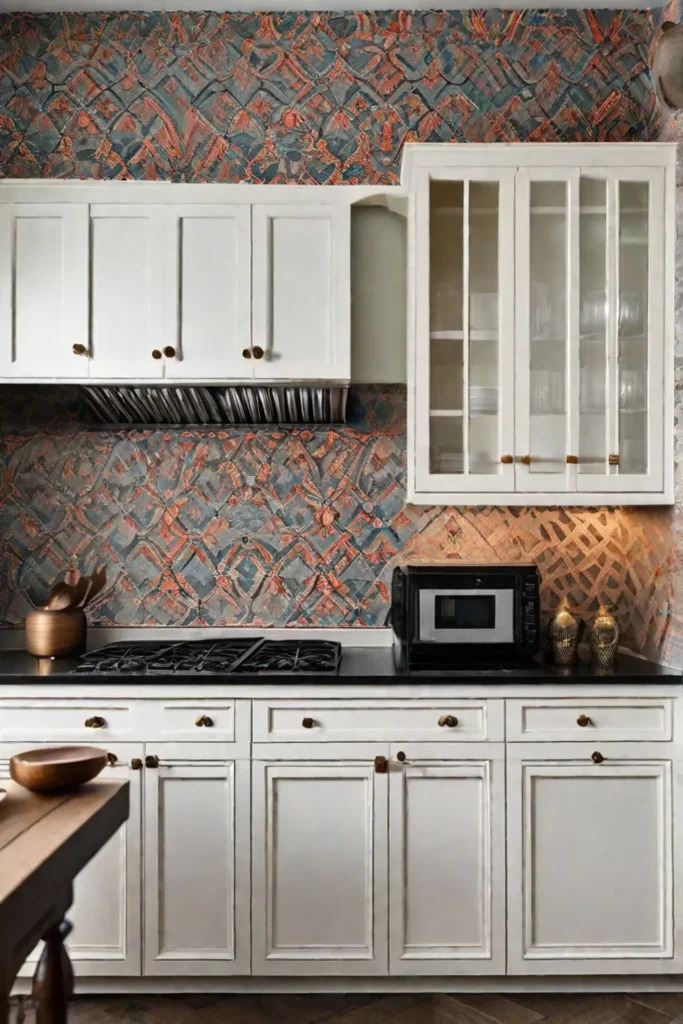
As interior designer Emily Henderson says, “Open shelving is all about functionality and style. It’s a great way to keep your kitchen essentials organized and within reach while showcasing your favorite pieces.” Home decor expert Joanna Gaines agrees, “Open shelving is a great way to add character and personality to your kitchen. It’s also a great way to save space and make your kitchen more inviting.”
Upgrade Lighting Fixtures
Lighting plays a crucial role in transforming the ambiance of a kitchen. Proper lighting can create a warm and inviting atmosphere, enhance functionality, and accentuate the overall design.
Consider upgrading your kitchen with pendant lights, recessed lighting, under-cabinet lighting, track lighting, or a statement-making chandelier. Pendant lights provide focused illumination over islands, countertops, and dining tables, while recessed lights offer general illumination and can be dimmed to create a softer atmosphere. Under-cabinet lighting illuminates work surfaces and creates a cozy glow, and track lighting allows for precise lighting control, highlighting specific areas or artwork. A chandelier can add a touch of elegance and sophistication to larger kitchens.

Experimenting with different light sources and styles can create a layered lighting scheme that enhances form and function. Dimmable lights allow versatility and energy-efficient LED fixtures can reduce energy consumption and save money.
Add a Pop of Color
Paint is a budget-friendly way to transform the look and feel of your kitchen. Choose a bold color that complements your existing décor or creates a vibrant contrast. Consider painting the cabinets, walls, or even the ceiling to make a statement.
The psychological effects of color in interior design are fascinating. Red stimulates appetite and encourages conversation, while orange promotes warmth, optimism, and creativity. Yellow inspires happiness, energy, and focus, and green evokes tranquility, reduces stress, and improves productivity. Blue calms the mind promotes relaxation, and enhances sleep, while purple stimulates imagination, creativity, and relaxation.
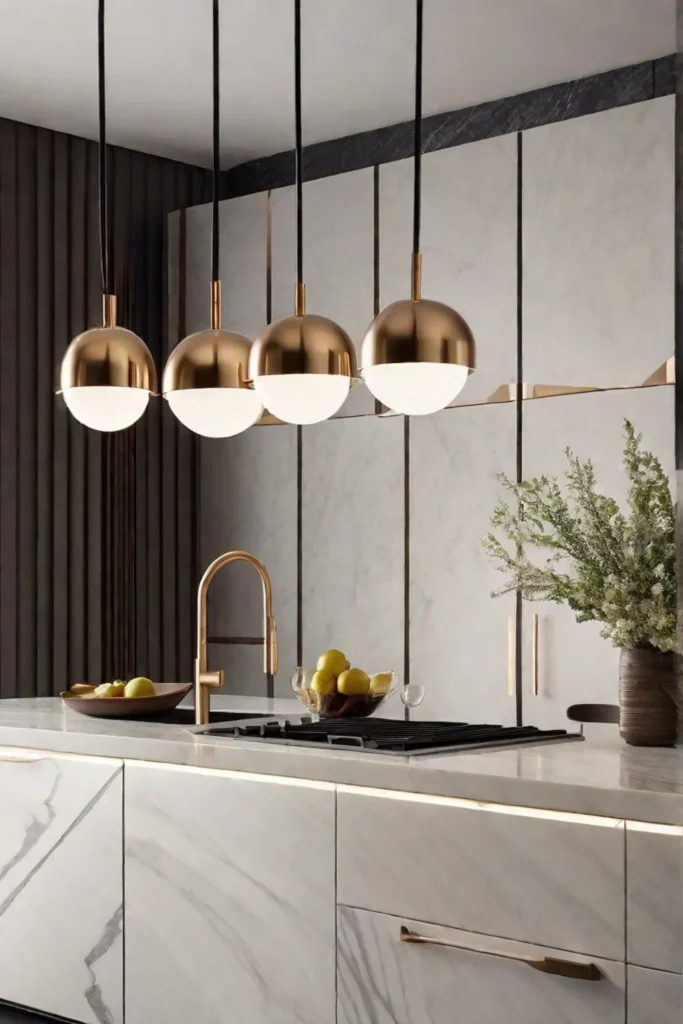
When selecting a color scheme, consider a monochromatic palette, complementary colors, analogous shades, or a neutral base with pops of color. You can add vibrant hues through a backsplash, cabinetry, appliances, countertops, textiles, or artwork.
Invest in Artwork
Artwork transforms a kitchen from a mere cooking space into a personalized and visually captivating haven. It adds character, evokes emotions, and sparks conversations.
When selecting artwork for your kitchen, consider the space’s overall style and choose pieces that complement the aesthetic. Opt for functional artwork, such as framed prints of recipes or food-themed paintings, to enhance the kitchen’s purpose. Introduce pops of color through your artwork to create a cheerful and inviting atmosphere.
To maintain a balance between functionality and style:
- Avoid overcrowding the space with too much artwork.
- Choose pieces appropriately sized for the kitchen’s dimensions and position them at eye level for optimal viewing.
- Allow negative space around the artwork to create visual interest and prevent the space from feeling cluttered.

Incorporate personal touches, such as family photos or travel souvenirs, to make the kitchen your own. Adding artwork lets you transform your kitchen into a space that reflects your unique personality and style.
Introduce Greenery
Introducing plants to your kitchen can do wonders for the space. Not only do they improve air quality by removing toxins like formaldehyde and benzene, but they also reduce stress and improve mood. Plants add a touch of nature and freshness to the space, creating a calming and inviting atmosphere.
Some low-maintenance plants that thrive in the kitchen environment include the snake, ZZ, pothos, spider, and peace lily. To maximize space and light, place these plants on windowsills, countertops, or hanging baskets. Group them together for a more dramatic effect, and consider using plant stands or wall-mounted planters to add height and interest.

Beyond traditional potted plants, you can also create a vertical or herb garden in your kitchen. Vertical gardens use hanging planters or trellises to grow a living wall, while an herb garden allows you to have fresh herbs within arm’s reach for cooking.
Update Cabinet Hardware
Upgrading your cabinet hardware is a simple and effective way to transform the look of your kitchen without breaking the bank. New knobs and pulls can instantly spruce up tired cabinetry, adding a touch of personality and style.
Current hardware trends include matte black for a sleek and modern look, warm and inviting gold or brass, and durable brushed nickel. You can also experiment with unique materials like leather for a touch of texture.
When installing new hardware, measure the distance between the current hardware to ensure proper spacing. Use a drill to create pilot holes, and screw in the latest hardware tightly, but avoid overtightening. If necessary, add washers to prevent the hardware from loosening over time.
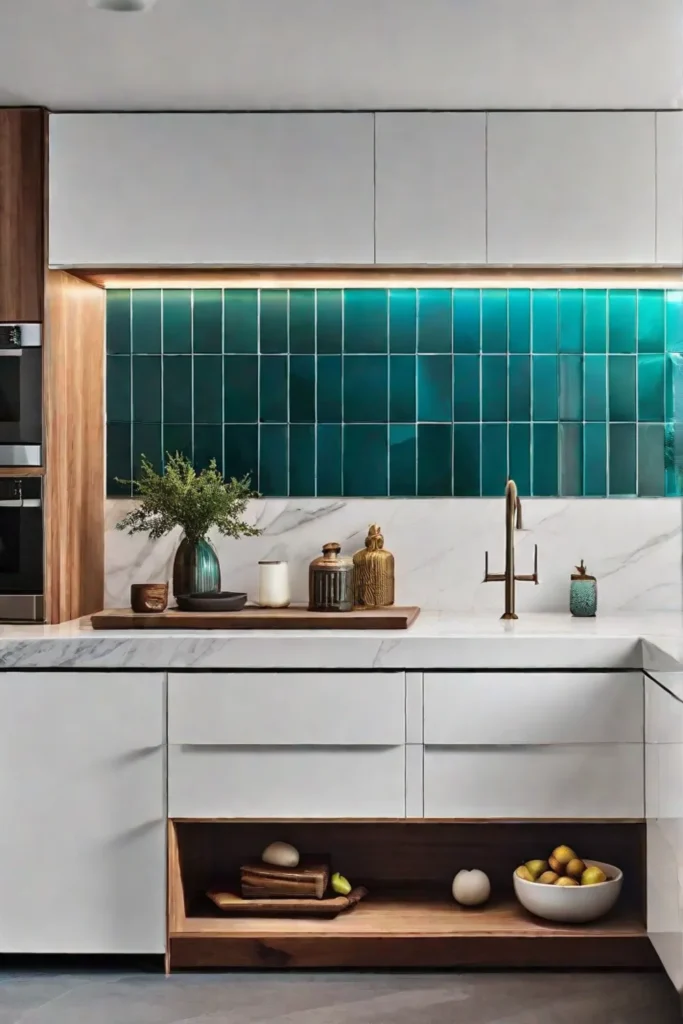
Pair your updated hardware with other kitchen upgrades, such as a new backsplash or a fresh coat of paint on the cabinets, to create a cohesive and visually stunning space.
Utilize Decorative Storage Solutions
With the power of decorative storage solutions, transform your kitchen from cluttered chaos to a chic and organized haven. These ingenious designs not only enhance the aesthetics of your space but also reduce clutter and maximize efficiency.
Decorative storage solutions can enhance aesthetics, reduce clutter, and increase kitchen efficiency. Consider floating shelves to display your favorite items, magnetic knife racks to free up drawer space, or lazy Susans to maximize cabinet storage. Hanging baskets and over-the-sink organizers can also help keep your kitchen tidy and visually appealing.
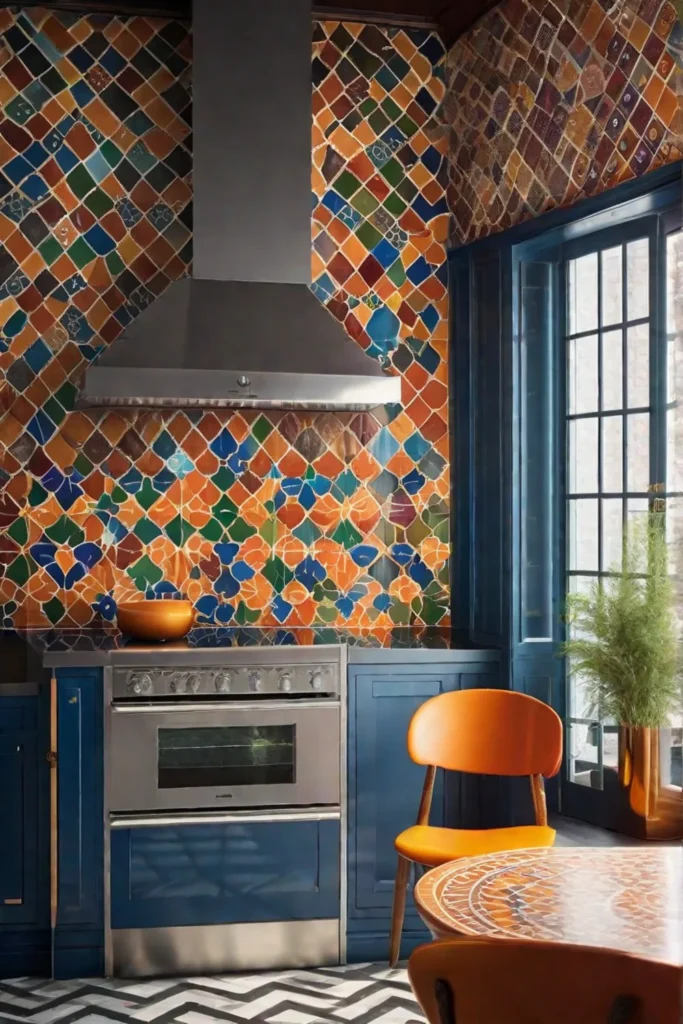
Before and after photos showcase the dramatic transformation that decorative storage solutions can bring to a kitchen. Take advantage of vertical space by installing upper cabinets or stacking shelves, and feel free to conceal appliances or other items behind cabinet doors or under the sink. Invest in innovative storage solutions that use sensors or voice control to enhance functionality and keep your kitchen organized.
Incorporate a Feature Wall
A feature wall in the kitchen serves as a captivating focal point, transforming the space from ordinary to extraordinary. It draws attention and adds a touch of personality to the room.
You can create a feature wall using various materials, such as tiles, wallpaper, or paint. Patterned tiles in bold colors or textures can make a striking statement, while wallpaper with elegant or whimsical designs can add a touch of elegance. Painting one wall in a contrasting color or a bold shade can also create a dramatic effect.
When it comes to feature walls, consider the size of your kitchen. In smaller kitchens, a feature wall can help define the space and create an illusion of depth. Choose subtle patterns or light colors to avoid overwhelming the room. In larger kitchens, you can experiment with more dramatic feature walls, using bold patterns, dark colors, or a combination of different materials.
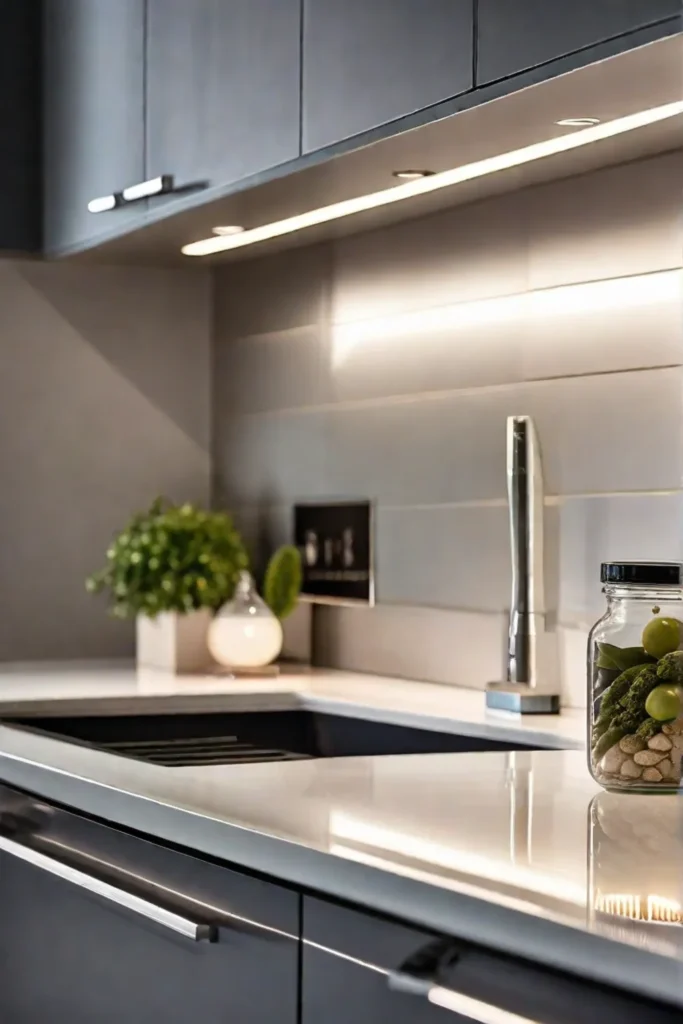
Complement your feature wall with other design elements, such as open shelving, pendant lighting, or a statement-making kitchen island. You can transform your kitchen into a visually captivating and personalized space by incorporating a feature wall.
Add a Rug or Runner
Rugs and runners can add both practical and aesthetic benefits to your kitchen. They provide traction, prevent slipping on slick floors, cushion your feet and legs, and absorb sound for a quieter environment. They can also break up the monotony of a neutral kitchen by introducing color, pattern, and texture.
When choosing a rug or runner for your kitchen, consider the space size and the placement of your appliances. A good rule of thumb is to leave at least 6 inches of bare floor around the edges. Select a durable material, such as nylon, polypropylene, or natural fibers like wool or sisal, that is easy to clean and resistant to spills.
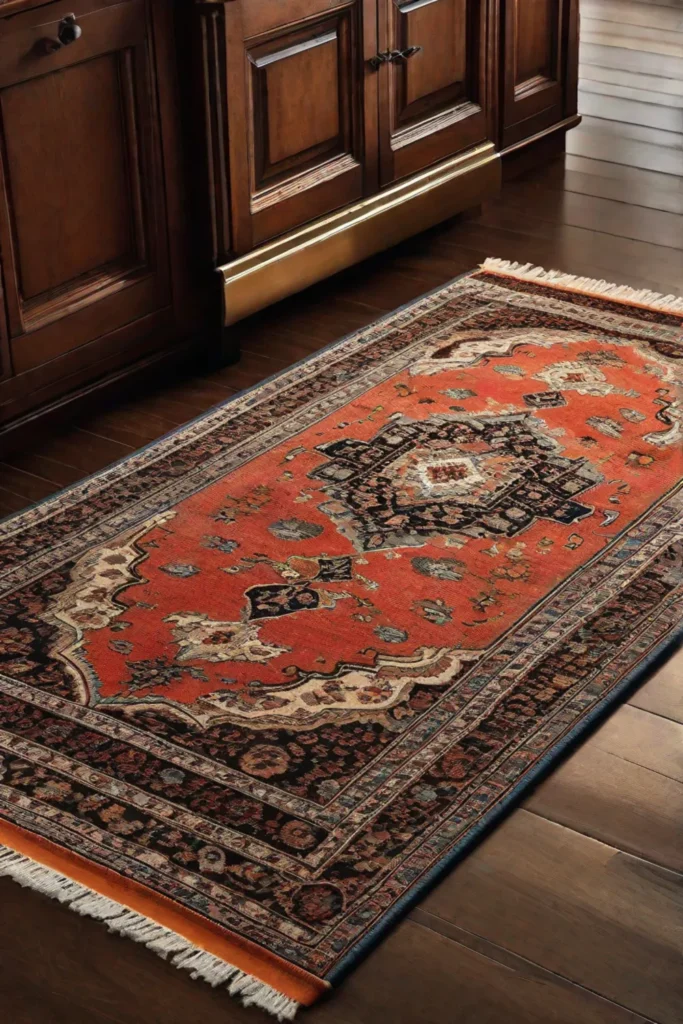
The pattern and color of your rug or runner should complement your kitchen’s overall style and color scheme. Geometric patterns can create a modern look, while floral designs add a touch of tradition. Solid colors offer a minimalist aesthetic.
Maintain your kitchen rug or runner by vacuuming or sweeping it regularly and treating spills immediately. Clean the carpet professionally every 1-2 years to keep it looking its best.
Experiment with Textures
Texture is pivotal in adding depth, character, and visual interest to kitchen decor. You can create a dynamic and inviting space that stimulates the senses by incorporating various textural elements.
Texture can enhance the visual appeal of your kitchen by adding depth and dimension, creating a layered effect that breaks up monotony. It can also provide tactile stimulation, inviting you to explore the space with your senses.
Consider mixing and matching smooth, rough, matte, and glossy finishes when combining textures. Incorporate natural elements like wood, stone, leather, and fabrics to bring warmth and organic appeal. Use contrasting textures to highlight specific areas or create focal points, but be mindful of balance to avoid overwhelming the space.
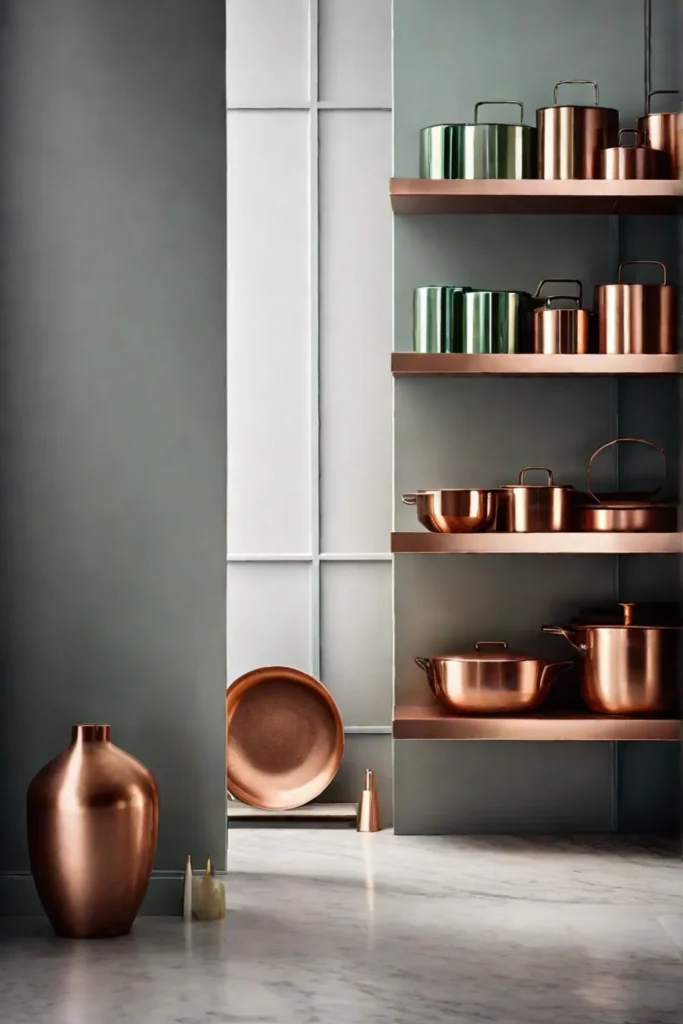
Textural elements in the kitchen can include cabinetry with natural grain or distressed finishes, countertops with varying patterns and textures, and a backsplash with tiles of different shapes, sizes, or textures. Appliances with matte or textured finishes, lighting fixtures with unique shades or materials, and accessories like woven baskets or textured fabrics can also contribute to the overall textural experience.
Conclusion
Transforming your kitchen doesn’t have to involve extensive renovations or exorbitant expenses. Implementing these simple decor ideas can elevate your space from drab to fab without breaking the bank.
Remember, the key to a stylish kitchen is personalizing it to reflect your unique style and needs. Choose elements that resonate with you, whether a bold accent wall or a collection of vintage kitchenware.
Take the first step towards your dream kitchen today. Start with one or two of these ideas and let your creativity flow. Share your before and after stories with us on social media to inspire others. Let’s make our kitchens the heart of our homes, where we cook, gather, and create lasting memories.
